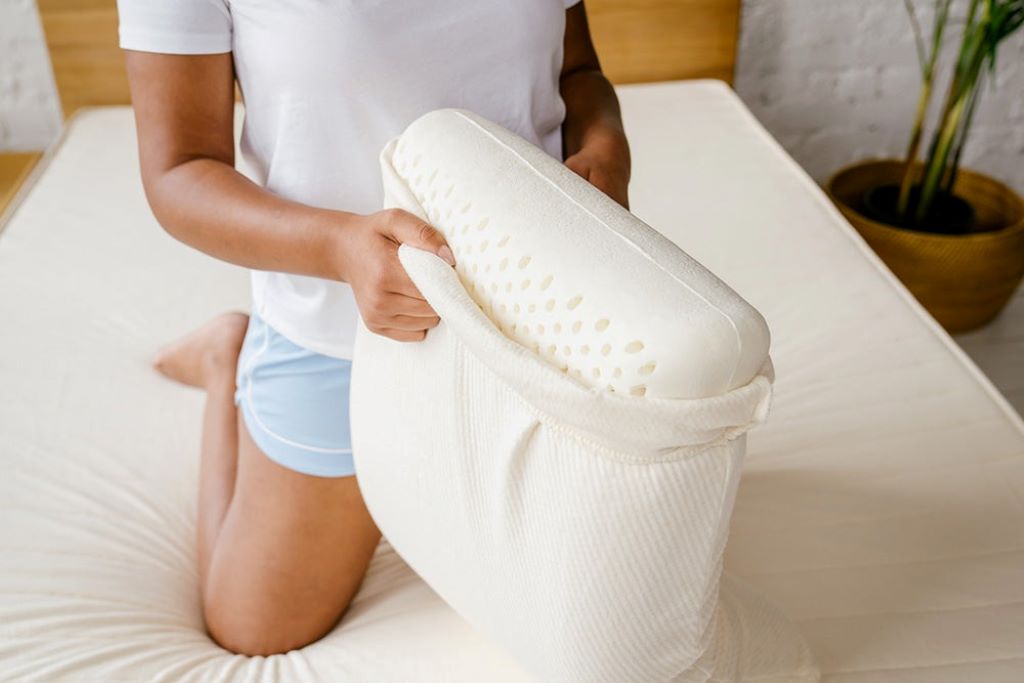
In a world full of memory foam, down alternatives, and orthopedic options, latex pillows are gaining fast momentum. But what exactly sets them apart, and are they truly worth the investment? Understanding everything you need to know about latex pillows helps you make an informed decision before your next bedroom upgrade.
Thank you for reading this post, don't forget to subscribe!What Are Latex Pillows?
Latex pillows come from either natural latex (harvested from rubber tree sap) or synthetic blends. Natural latex, especially Dunlop and Talalay types, is known for durability and responsiveness. These pillows are often hypoallergenic, mold-resistant, and maintain their shape far longer than traditional pillow materials.
The manufacturing process defines the pillow’s feel. Dunlop latex is denser and firmer, while Talalay latex is lighter and bouncier. Both provide impressive support for spinal alignment. According to the Sleep Foundation, latex pillows maintain consistent loft and don’t flatten easily over time—a key benefit over memory foam.
Key Benefits Backed by Experts
-
Superior Support for All Sleepers
Latex pillows conform to your head and neck without sinking. Chiropractors often recommend them for individuals with neck pain or chronic stiffness. The buoyancy helps maintain proper cervical alignment throughout the night. Unlike memory foam, latex doesn’t retain body impressions, making it ideal for combination sleepers.
-
Natural Cooling Properties
Overheating at night can ruin your sleep cycle. Latex naturally allows airflow due to its open-cell structure. Talalay latex, in particular, features a consistent ventilation system that keeps your head cool. Consumer Reports indicate that latex pillows consistently outperform synthetic competitors in heat regulation tests.
-
Eco-Friendly and Sustainable
Latex pillows made from 100% natural latex are biodegradable and harvested without harming trees. Many certified organic options are produced under sustainable conditions. Compared to polyurethane-based foams, latex requires significantly less energy and emits fewer toxins during production.
Potential Drawbacks to Consider
No product is perfect, and understanding all aspects of latex pillows is crucial.
- Higher cost: Premium latex pillows can range from $60 to over $150. However, their lifespan justifies the price.
- Initial odor: Natural latex has a slight smell initially, often compared to vanilla or rubber. It dissipates within a few days.
- Firm feel: Some users find latex too firm, especially if they’re used to plush down pillows.
Still, user satisfaction rates are high. A SleepLikeTheDead.com study found that over 89% of latex pillow users report reduced neck pain and better sleep quality.
Latex vs. Memory Foam: What’s the Difference?
Many consumers confuse latex with memory foam. While both contour to the body, their performance differs.
- Latex rebounds instantly, offering more support and bounce.
- Memory foam slowly compresses, creating a cradle-like effect.
- Latex stays cooler naturally, whereas memory foam traps heat.
- Durability favors latex, often lasting over 5 years without loss of shape.
Therefore, if you’re a hot sleeper or need resilient head support, latex is likely the better fit.
Who Should Use Latex Pillows?
Side Sleepers: Latex offers firm support, keeping the head elevated to align the neck and spine.
Back Sleepers: A medium-density latex pillow cradles the neck curve, reducing snoring and muscle tension.
Allergy Sufferers: Latex is naturally resistant to dust mites, mold, and bacteria—ideal for people with asthma or allergies.
Eco-Conscious Buyers: Organic latex options from brands like Avocado and Naturepedic are sustainable and chemical-free.

Real-World Examples and Insights
Brands like Saatva, Brooklyn Bedding, and Coop Home Goods have entered the latex pillow market with rave reviews. Saatva’s latex pillow, for instance, features an organic cotton cover and shredded latex core—offering a blend of plushness and bounce.
Consumer reviewer Amanda from Chicago noted, “I used to wake up with neck pain daily. After switching to a Talalay latex pillow, the pain vanished in days.” Her experience isn’t unique. Thousands of verified reviews across platforms echo similar benefits.
Everything You Need to Know About Latex Pillows and Maintenance
Maintaining your latex pillow is simpler than you might think.
- Avoid machine washing. Instead, spot clean with mild soap and water.
- Use a breathable pillowcase made from cotton or bamboo to enhance cooling.
- Keep away from direct sunlight, as UV rays can degrade natural latex over time.
With proper care, a latex pillow can last between 5 to 10 years, far exceeding the typical 1–2-year lifespan of polyester or memory foam.
FAQs About Latex Pillows
- Are latex pillows good for neck pain?
Yes. They provide uniform support that keeps the neck and spine aligned, reducing morning stiffness. - Can people with latex allergies use them?
Most latex pillows are encased in covers that prevent direct skin contact. However, it’s best to consult your doctor before use. - Do latex pillows flatten over time?
No. Their structure remains consistent, even after years of use. - What’s better: shredded or solid latex?
Shredded latex is adjustable and softer, while solid latex offers uniform support. Choice depends on personal preference. - Are latex pillows safe for children?
Yes, especially natural latex options with no synthetic additives. They’re hypoallergenic and toxin-free. - How often should I replace a latex pillow?
Every 5–10 years, depending on usage and maintenance. - Can you wash a latex pillow?
Only spot cleaning is recommended. Never submerge it in water or use a washing machine.
Final Thought
Latex pillows are more than a trendy sleep accessory—they’re a long-term investment in health and comfort. This guide has covered everything you need to know about latex pillows, from their supportive nature and cooling ability to eco-friendly features. Though the initial cost may seem steep, the benefits far outweigh it, especially for those battling chronic neck pain or allergies.
Choosing the right latex pillow comes down to personal sleep preferences, but with countless options and undeniable advantages, it’s easy to see why they’re quickly becoming a staple in modern bedrooms.
Read More:
How to wash pillows? Key tips for cleaning
Celebrating Valentine’s Day with Custom Pillows
Featured Image Source
